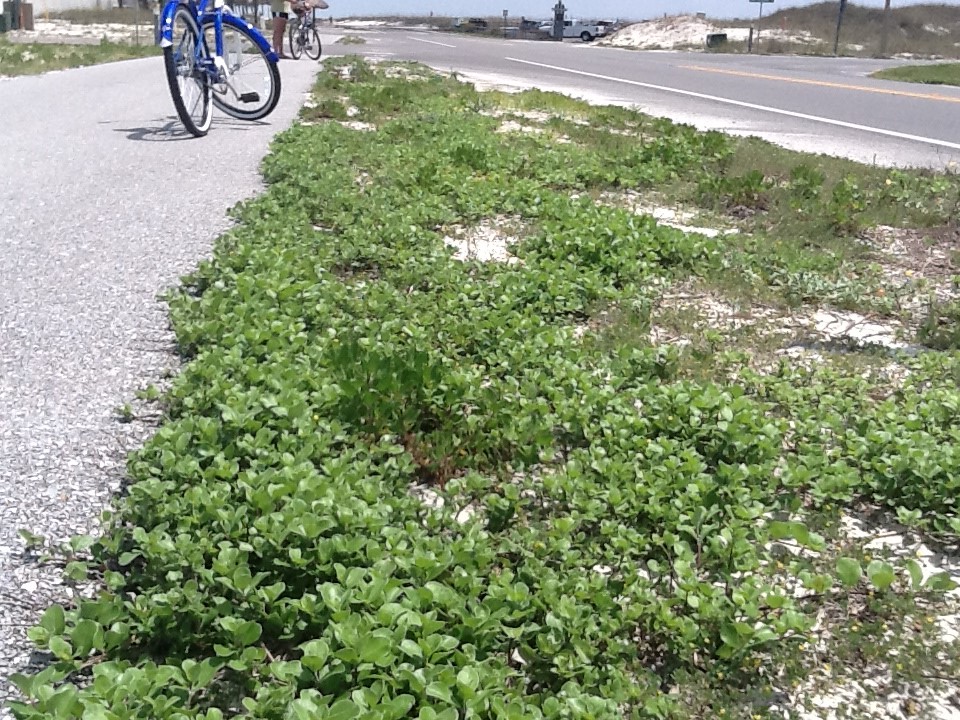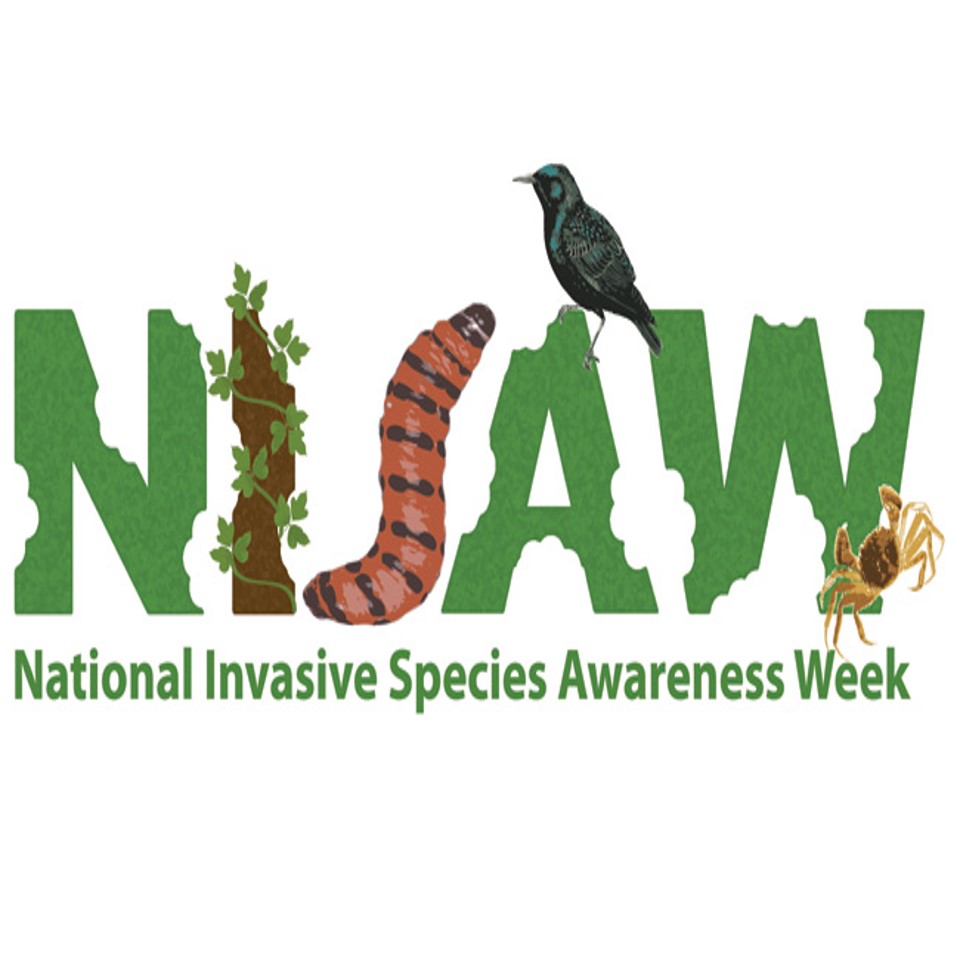National Invasive Species Awareness Week
ARE YOU AWARE OF THE INVASIVE DUNE PLANT CALLED BEACH VITEX?
I would say most are not. Though the plant was known over a decade ago, the education/outreach on this species has not been equal to the effort of lionfish.

In 2012 I was contacted by a Gulf Breeze resident who had the invasive vine – beach vitex (Vitex rotundifolia) growing on her property. They told me that had it under control but felt it was coming from Pensacola Beach. I checked the EDDMapS database and found only three records of the plant in the state of Florida. Two were in Jacksonville and one was on Pensacola Beach. So, I went to investigate.
It was there… and it was pretty bad. The front yard was about 25% covered with the plant but a side yard and the back yard were 100% covered. I surveyed other parts of Pensacola Beach and found the plant in other locations. If you remember from Part 1 of this series, if you cannot prevent the invasive species from reaching your location, the next thing is Early Detection Rapid Response (EDRR). This was definitely an EDRR species. We needed to get on top of this as soon as possible.
In 2013 I conducted a survey of Pensacola Beach on my bicycle. I found eight more locations that had the plant. They were all on private property. I asked the homeowners if they knew how the plant got there. Some replied that they had planted it. Others said that they had hired a landscaper, and this was the plant they had chosen. Others had no idea where it came from. At the time, beach vitex was not listed as an invasive species in Florida. It is now and is also listed as a Florida noxious weed (you can no longer sell it). It was time for a Rapid Response – education about the plant, its invasiveness, and how to manage.
Beach vitex is native to the Pacific coast of Asia. There, it grows in coastal areas where there is plenty of open sunlight and well drained soils. It was brought to the U.S. as a possible ornamental plant in the 1950s. There are no records of what happened to those initial plants, but a second wave was brought to North Carolina in the 1980s. They decided to use the plant in dune restoration after a hurricane and that is when it “raised its ugly head”.
Beach vitex is allelopathic – it releases compounds that pull water away from the native plants causing their death – vitex then takes over the newly empty space – spreading across the beach. The plant has a taproot from which extend vines that run across the surface of the sand in almost a 360° pattern. It begins as a soft herbaceous vine, but with time, becomes woody and larger in diameter. It will eventually grow vertical and become more of a shrub. In the Carolina’s it took over the dune systems forming a thick monoculture resembling kudzu – giving it their local name “beach kudzu”. During the summer months the vines can grow very quickly – up to 20 feet in one week – covering the landscape. At the time they were concerned this would impact sea turtle nesting, now there is evidence that it has. It also impacted a state listed dune plant they were trying to protect. North and South Carolina formed a state task force to battle the plant and have spent hundreds of thousands of dollars doing so. When we first posted we had found it on Pensacola Beach I was contacted by the Carolina Task Force and advised to get rid of it as quickly as possible.
My most recent survey was conducted in the fall of 2023. Currently the plant has been found at 100 sites.
- 61 of these are on Pensacola Beach. 57 (93%) are east of Casino Beach and 32 of those (56%) are north of Via DeLuna Blvd.
- 25 are within Gulf Islands National Seashore and 24 of those are at Naval Live Oaks.
- 7 sites at Navarre with 6 of those on Navarre Beach.
- 3 sites are in Gulf Breeze proper.
- 2 sites are on Perdido Bay.
- 2 sites are on Perdido Key.
At this time 74 of the 100 sites have been treated or removed.
36 of those 74 sites (49%) the plant has not returned. Treatment continues on the other 38 sites.
39 of the 61 sites on Pensacola Beach are private property, and it is up to the homeowner to manage the plant. Florida Sea Grant continues to hold community events to manage the 9 public sites on Pensacola Beach.
The most recent EDDMapS database shows that beach vitex occurs in two other panhandle counties. These include Okaloosa and Franklin. It is very possible they occur in others, but surveys have not been conducted.
Methods of managing this plant vary. Small, individual plants can be successfully removed by hand with no regrowth. Small patches can be removed to the taproots and those can be spot sprayed with herbicide. Large patches are very difficult to remove by hand and herbicides are recommended.
If you have questions as to whether or not you have beach vitex in your area, or need advice on how to manage it, contact your county extension office. It is EDRR time.

- Our Environment: Part 10 – Improving Agriculture - June 20, 2025
- Marine Creatures of the Northern Gulf – Snails and Slugs - June 20, 2025
- Our Environment: Part 9 – Agriculture Challenges - June 6, 2025
